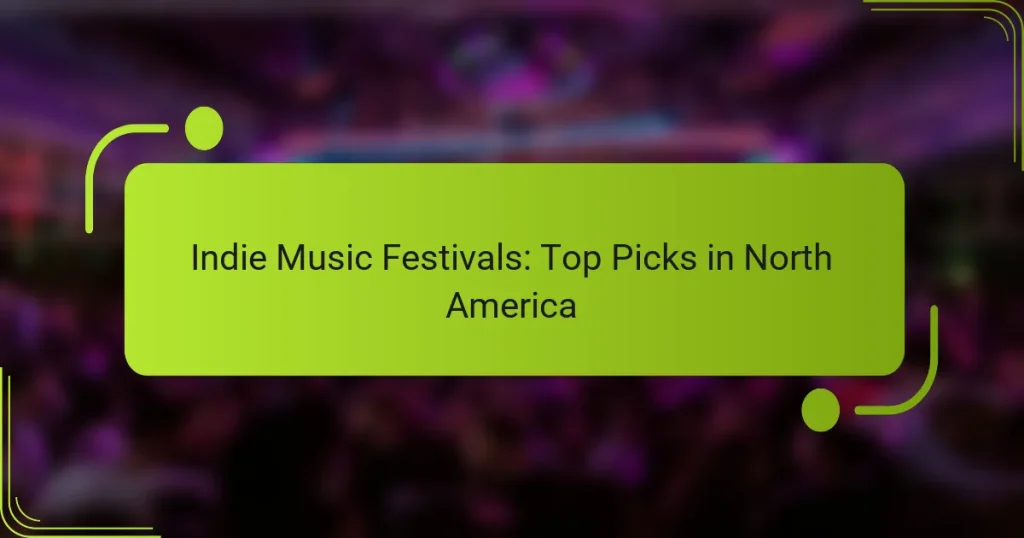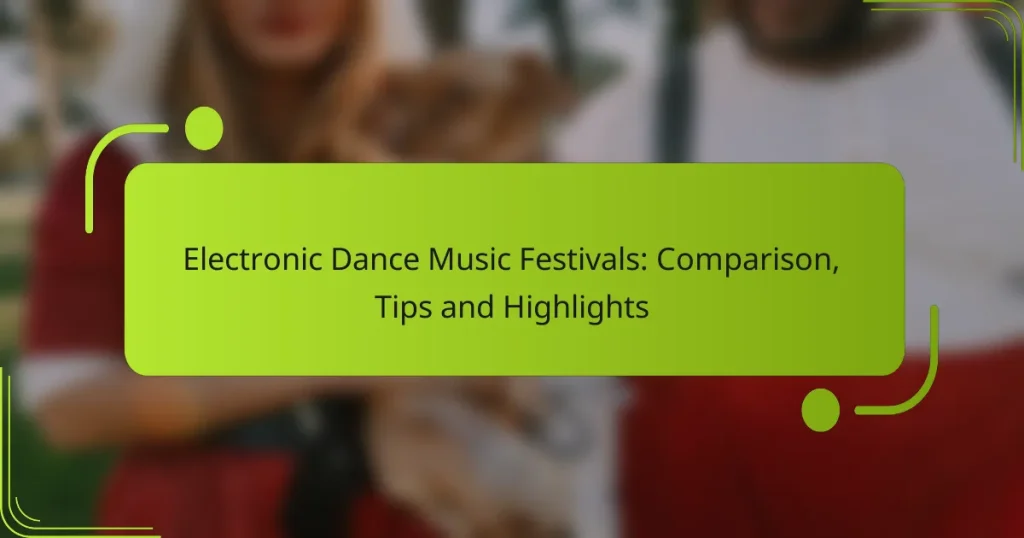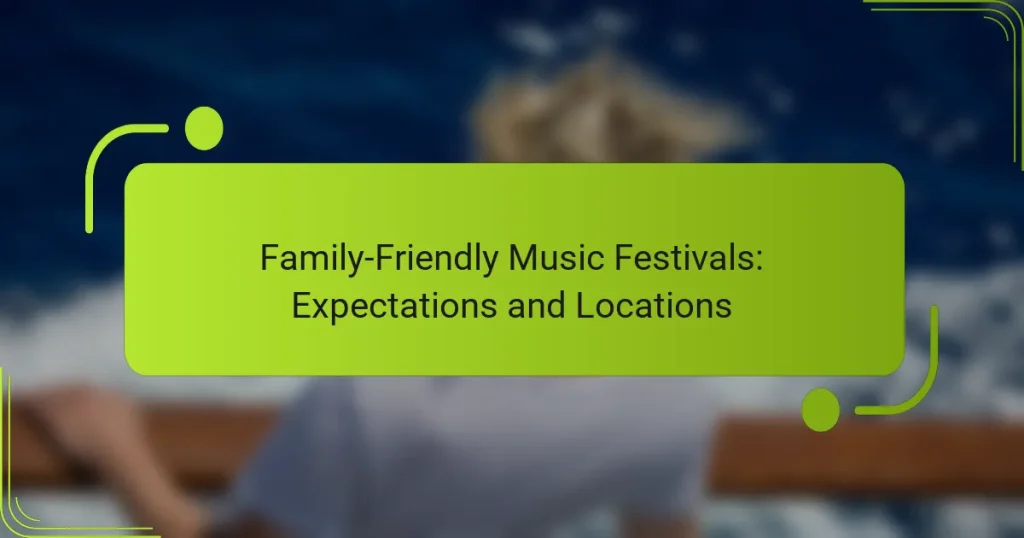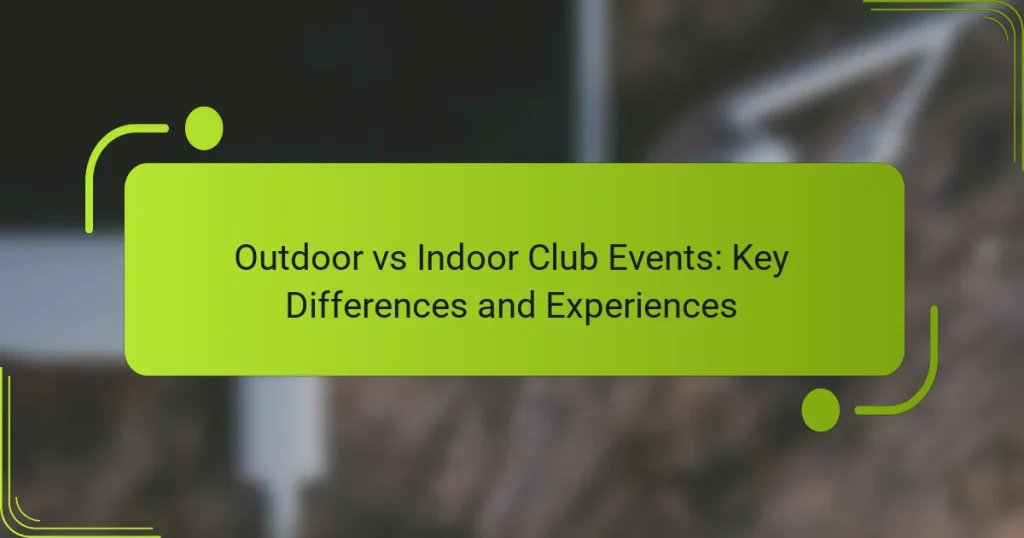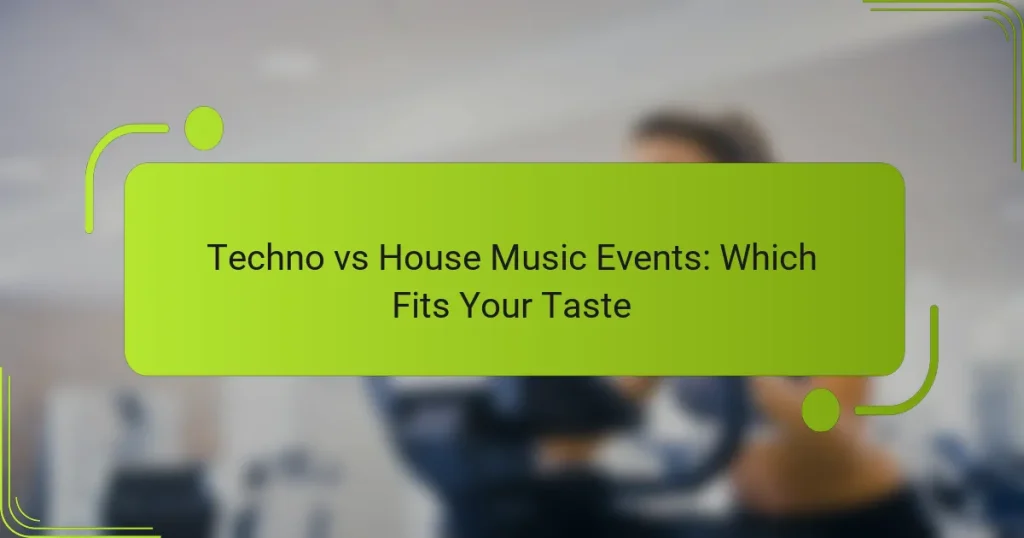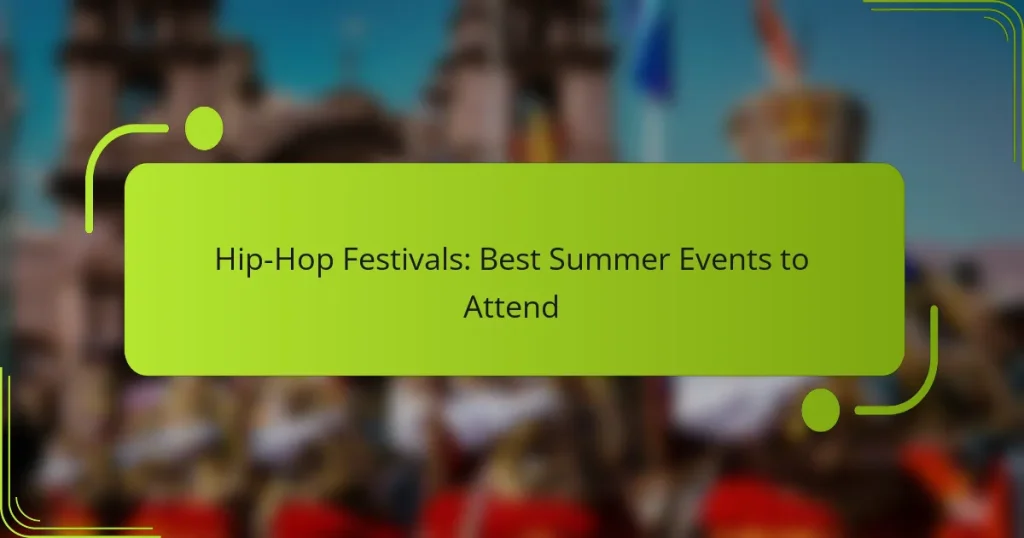Festivals and clubs in the United States showcase a vibrant array of event types and music genres, reflecting the rich cultural tapestry of the nation. From music and food festivals to art and film events, each offers unique experiences tailored to diverse interests. Meanwhile, club scenes across major cities are shaped by local influences, with dominant genres that define their nightlife. Successful festivals thrive on accessibility, diverse lineups, and strong audience engagement, ensuring memorable experiences for all attendees.
Electronic Dance Music Festivals: Comparison, Tips and Highlights
Family-Friendly Music Festivals: Expectations and Locations
Outdoor vs Indoor Club Events: Key Differences and Experiences
Techno vs House Music Events: Which Fits Your Taste
Virtual Music Festivals: Benefits, Drawbacks and Experiences
Hip-Hop Festivals: Best Summer Events to Attend
What are the most popular festival types in the United States?
The United States hosts a diverse range of festival types, with music, food, art, cultural, and film festivals being among the most popular. Each type offers unique experiences that cater to various interests and communities across the country.
Music festivals
Music festivals are major events that feature live performances from various artists, spanning genres like rock, pop, electronic, and hip-hop. Popular festivals such as Coachella and Lollapalooza attract thousands of attendees, often requiring tickets to be purchased months in advance.
When attending a music festival, consider factors like location, lineup, and accommodations. Many festivals offer camping options, while others are held in urban settings with nearby hotels. Planning ahead can enhance your experience significantly.
Food festivals
Food festivals celebrate culinary arts and local cuisine, showcasing a variety of dishes from different cultures. Events like the New Orleans Food & Wine Experience and the Los Angeles Food & Wine Festival highlight regional specialties and often include tastings, cooking demonstrations, and chef appearances.
Visitors should be prepared for crowds and long lines, especially at popular booths. It’s advisable to arrive early and sample a range of offerings to make the most of the experience. Some festivals may also feature competitions, adding an exciting element to the event.
Art festivals
Art festivals focus on visual arts, bringing together artists, galleries, and art enthusiasts. Events such as Art Basel Miami Beach and the Santa Fe Indian Market showcase a wide range of artworks, from contemporary pieces to traditional crafts.
Attendees can often purchase artworks directly from artists, making these festivals a great opportunity for collectors. Engaging with artists and attending workshops can deepen your appreciation of the art on display.
Cultural festivals
Cultural festivals celebrate the heritage and traditions of specific communities, featuring music, dance, food, and crafts. Events like the Albuquerque International Balloon Fiesta and the San Francisco Chinese New Year Festival highlight cultural diversity and foster community pride.
Participating in these festivals can provide insights into different cultures and promote inclusivity. Many festivals also include educational programs and activities for families, making them suitable for all ages.
Film festivals
Film festivals showcase independent and international films, providing a platform for filmmakers to present their work. Renowned festivals like Sundance and Tribeca attract industry professionals and cinephiles alike, often featuring premieres and panel discussions.
Attending a film festival can be a unique experience, as it often includes Q&A sessions with filmmakers. It’s wise to plan your schedule in advance, as screenings can fill up quickly, and some films may only be shown once during the event.
How do club genres differ across major cities?
Club genres vary significantly across major cities, influenced by local culture, history, and audience preferences. Each city tends to have a dominant genre that shapes its nightlife and music scene.
Electronic Dance Music in Los Angeles
Los Angeles is a hub for electronic dance music (EDM), attracting both local and international DJs. The city’s vibrant nightlife features a mix of large festivals and intimate club events, often showcasing genres like house, techno, and trance.
Venues such as the Hollywood Palladium and Exchange LA regularly host top-tier EDM events. The city’s warm climate also allows for outdoor festivals, enhancing the overall experience.
Hip-Hop in New York City
New York City is the birthplace of hip-hop, making it a cornerstone of the genre’s culture. Clubs in neighborhoods like the Bronx and Brooklyn frequently feature live performances and open mic nights, fostering local talent.
Prominent venues such as the Apollo Theater and SOB’s are known for hosting both emerging artists and established acts. The city’s diverse population also influences the sound, blending traditional hip-hop with various musical styles.
Rock music in Chicago
Chicago has a rich rock music history, with a strong emphasis on blues and punk rock. The city’s clubs often feature live bands, making it a great place for rock enthusiasts to discover new talent.
Iconic venues like the Metro and Lincoln Hall regularly host rock concerts, showcasing both local bands and national tours. The city’s music festivals, such as Lollapalooza, further highlight its rock scene, attracting fans from around the world.
What are the key attributes of successful festivals?
Successful festivals share several key attributes that contribute to their overall appeal and effectiveness. These include location accessibility, lineup diversity, audience engagement, and sponsorship opportunities, all of which play a crucial role in attracting attendees and ensuring a memorable experience.
Location accessibility
Location accessibility is vital for the success of any festival. A site that is easy to reach by public transport or major roadways can significantly boost attendance. Consider factors such as parking availability, proximity to accommodations, and local infrastructure when selecting a venue.
For instance, festivals held in urban areas typically benefit from better public transport options, while rural festivals may require shuttle services to enhance accessibility. Always assess the needs of your target audience to ensure the location meets their expectations.
Lineup diversity
Lineup diversity refers to the variety of performers and genres featured at a festival. A well-rounded lineup can attract a broader audience, catering to different tastes and preferences. Aim for a mix of established artists and emerging talent to create excitement and inclusivity.
For example, a music festival might include various genres like rock, electronic, and hip-hop, appealing to diverse demographics. Regularly updating the lineup with fresh acts can keep the festival relevant and engaging for returning attendees.
Audience engagement
Audience engagement is essential for creating a memorable festival experience. Interactive activities, workshops, and social media integration can enhance participation and foster a sense of community among attendees. Consider incorporating elements that encourage audience interaction, such as Q&A sessions or live polls.
Additionally, providing platforms for attendees to share their experiences online can amplify engagement. Encourage the use of specific hashtags or photo contests to create buzz and enhance the festival’s visibility.
Sponsorship opportunities
Sponsorship opportunities can significantly impact a festival’s financial viability and marketing reach. Engaging with brands that align with the festival’s theme can enhance the overall experience while providing necessary funding. Identify potential sponsors early and create tailored packages that highlight mutual benefits.
For example, local businesses may be interested in sponsoring food vendors or workshops, while larger brands might focus on main stage performances. Establishing clear sponsorship tiers can help attract a range of partners, from small local companies to major corporations.
How to choose the right festival for your interests?
Choosing the right festival involves aligning your musical tastes, desired atmosphere, and budget. Start by identifying what genres excite you, then consider the scale and vibe of the festival, along with ticket options that fit your financial plan.
Identify personal music preferences
Your music preferences are the foundation for selecting a festival. Determine which genres resonate with you, whether it’s electronic, rock, hip-hop, or folk. Look for festivals that feature artists or bands you enjoy, as this will enhance your overall experience.
Consider exploring new genres as well; some festivals showcase a diverse lineup that might introduce you to music you haven’t experienced before. This can be a great way to expand your musical horizons while enjoying live performances.
Consider festival size and atmosphere
The size and atmosphere of a festival significantly influence your experience. Smaller festivals often provide a more intimate setting, allowing for closer interactions with artists and fellow attendees. In contrast, larger festivals may offer a wider variety of acts and a more vibrant atmosphere but can feel overwhelming.
Think about what environment you thrive in. If you prefer a laid-back vibe, seek out smaller, boutique festivals. If you enjoy the excitement of large crowds and elaborate stages, larger festivals may be more suitable.
Evaluate ticket pricing and packages
Ticket pricing can vary widely based on the festival’s location, size, and lineup. Research different pricing tiers, which may include general admission, VIP options, and early bird specials. Understanding these options helps you find a package that fits your budget.
Additionally, consider any extra costs such as parking, camping, or food. Some festivals offer package deals that include accommodations or meal plans, which can provide better value. Always compare what’s included in each ticket option to avoid unexpected expenses.
What are the emerging trends in festival experiences?
Emerging trends in festival experiences focus on enhancing engagement and sustainability while integrating technology. These trends reflect a shift towards more immersive, environmentally conscious, and flexible event formats that cater to diverse audiences.
Virtual reality integrations
Virtual reality (VR) integrations in festivals allow attendees to experience events in immersive ways, even from remote locations. By using VR headsets, participants can enjoy live performances, interactive installations, and social experiences that replicate the festival atmosphere.
Festivals can leverage VR to create unique content, such as behind-the-scenes tours or artist meet-and-greets. This technology can also enhance accessibility for those unable to attend in person, expanding the audience reach significantly.
Sustainability initiatives
Sustainability initiatives are becoming a priority for festivals, focusing on reducing waste and promoting eco-friendly practices. Many events are adopting measures such as using biodegradable materials, implementing recycling programs, and encouraging public transportation to minimize their environmental impact.
For example, festivals may partner with local organizations to offset carbon emissions or offer incentives for attendees who carpool or use public transit. These initiatives not only benefit the environment but also resonate with increasingly eco-conscious audiences.
Hybrid event formats
Hybrid event formats combine in-person and virtual experiences, catering to a broader audience. This approach allows festivals to maintain traditional elements while also offering live streaming options for those who prefer to participate online.
Organizers should consider the technical requirements for hybrid formats, such as reliable internet connectivity and high-quality streaming equipment. Balancing the experience for both in-person and virtual attendees is crucial to ensure engagement across all platforms.
